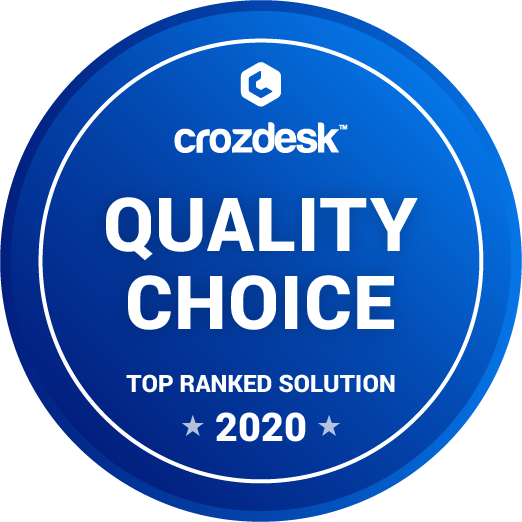
Want to transform your supply chain management?
SAP Business One may be the transformational solution you need for your business. Countless businesses depend on this powerful ERP solution to both streamline their operations and enhance efficiency throughout their supply chains.
But here’s the thing…
The full potential of SAP Business One becomes accessible through appropriate integration. A correct SAP Business One implementation can transform inventory management and improve shipment tracking and order processing while enhancing supplier and customer connections.
Why SAP Business One Matters for Supply Chain Management
Supply chain management presents a complex challenge because it requires multiple interconnected components to function together flawlessly. Lacking appropriate tools makes supply chain management feel like trying to lead an orchestra when blindfolded.
SAP Business One removes that blindfold.
The following reasons illustrate why more businesses are adopting this solution:
- Achieve real-time monitoring of your supply chain by gaining visibility into every stage from raw materials to the finished product.
- Intelligent workflow automation allows businesses to remove manual processes and decrease human mistakes.
- Keep essential data centralized in one location to ensure easy access for all authorized users.
- Utilize robust analytics to improve your decision-making capabilities with data-driven insights.
Recent projections show that the global SAP Business One consulting service market will expand from USD 0.44 billion in 2024 to USD 0.99 billion by 2033 which demonstrates the rising demand for why SAP Business One solutions is the first choice for businesses. The rapid expansion of this platform is intentional because businesses understand its transformative capabilities.
Key Integration Challenges (And How to Overcome Them)
Introducing any new system inevitably leads to multiple obstacles that need to be addressed. SAP Business One is no exception. These represent the primary obstacles you may encounter:
Data Migration Complexity
The process of transferring your current data into SAP Business One feels like forcing square pegs into round holes. This data migration process becomes a complicated nightmare due to various data formats combined with inconsistent naming conventions and duplicated entries.
The Solution: Start with a thorough data audit. Survey your data to pinpoint what requires migration then clean it before you create a comprehensive migration blueprint. Employ specialized migration tools or collaborate with a knowledgeable consultant to ensure a smooth transition.
Resistance to Change
Never underestimate the human factor. Your staff might oppose the implementation of a new system if they feel content with current operations.
The Solution: Focus on change management from day one. Engage crucial decision-makers throughout the process and deliver thorough training while making system benefits evident.
Integration with Legacy Systems
Your organization uses multiple software applications that must integrate effectively with SAP Business One.
The Solution: Prioritize integration with critical systems first. Leverage SAP’s existing connectors for integrations when possible but develop custom solutions for applications that require specialized integration.
Step-by-Step Integration Process
After gaining an understanding of the challenges we need to address we will divide the integration process into smaller manageable steps.
1. Assessment and Planning
Begin the integration journey by conducting a complete analysis of your current supply chain operations. Pinpoint operational weaknesses and bottlenecks and determine areas to enhance performance. Establish definitive goals for your SAP Business One deployment.
Pro Tip: Develop a comprehensive project timeline which identifies each milestone, the person responsible, and their respective deadlines. Reserve sufficient time for both testing procedures and troubleshooting activities.
2. System Configuration
Set up SAP Business One to match the specific needs of your business operations. The process requires establishing master data and business rules together with defining workflows.
Key Focus Areas:
- Inventory management parameters
- Procurement processes
- Production planning settings
- Sales and distribution workflows
- Financial integration
3. Data Migration
Load your current data into SAP Business One while maintaining both accuracy and completeness.
By 2025 businesses increasingly adopt cloud solutions and migrate to cloud infrastructures for SAP Business One. The transition towards cloud adoption is propelled by the need for scalable solutions and agile operations which enable effortless integration with leading cloud platforms such as Microsoft Azure and Amazon Web Services (AWS).
4. Testing and Training
Perform complete system testing before activation and equip your team with thorough training.
AI and machine learning advancements are improving SAP Business One by enabling better financial forecasting and inventory planning while also optimizing workflows. Tools such as B1UP and Process Automation (BPA) play a vital role in streamlining operational processes.
Best Practices for Seamless Implementation
What steps should you take to achieve a successful SAP Business One integration? Follow these best practices:
Secure Executive Sponsorship
Leadership buy-in plays a vital role in defeating organizational resistance and obtaining essential resources.
Start with Core Functionality
Don’t try to implement everything at once. Develop your system incrementally by starting with fundamental features before expanding the project scope.
Invest in Training
Even the most advanced system becomes useless unless your team has the knowledge to operate it. Invest heavily in comprehensive training programs.
Document Everything
Create thorough documentation that covers system configuration details along with customizations and business processes.
Real-World Benefits and ROI
The integration of SAP Business One into supply chain management processes provides businesses with a strategic advantage beyond technological advancement. Here are the actual benefits you will receive:
Improved Inventory Management
The implementation of real-time stock monitoring and automated reordering systems enables businesses to experience:
- 15-30% reduction in inventory holding costs
- 20-40% decrease in stockouts
- Significant improvement in inventory turnover
Enhanced Supplier Relationships
When businesses commit to enhanced communication and transparency they achieve better negotiating terms as well as quicker issue resolution alongside stronger partnerships.
Accelerated Order Fulfillment
When businesses streamline their processes they achieve a 30-50% reduction in order processing time and they achieve better order accuracy rates along with higher customer satisfaction scores.
By 2025 the majority of businesses with 53% marking ERP systems as their priority investments lead adoption in manufacturing and distribution sectors. The statistic demonstrates increasing industry awareness about the business success benefits of ERP systems.
Future-Proofing Your Supply Chain with SAP
Since the business environment continues to change, your supply chain operations must also transform accordingly. SAP Business One delivers adaptive scalability along with flexibility to respond to dynamic conditions.
Cloud Integration
Cloud deployment offers numerous advantages:
- Reduced IT infrastructure costs
- Easier remote access
- Automatic updates and maintenance
- Enhanced disaster recovery capabilities
AI and Machine Learning
These advanced technologies enable:
- Predictive analytics for demand forecasting
- Automated anomaly detection
- Intelligent process optimization
- Advanced risk assessment
The United States sees a major effort to migrate to SAP S/4HANA because of SAP ECC’s end of mainstream support in 2027 and S/4HANA’s strategic benefits of real-time analytics and cloud adaptability.
The Bottom Line
To achieve seamless supply chain management through SAP Business One requires strategic planning together with precise execution followed by continuous optimization. The outcomes achieved through this process make the hard work fully justified.
Through adherence to the instructions and best practices presented within this article you will be able to:
- Gain unprecedented visibility into your supply chain
- Automate routine tasks to improve efficiency
- Streamline your decision-making process by utilizing precise data delivered in real time
- Adapt quickly to changing market conditions
- Drive substantial cost savings and revenue growth
A supply chain’s overall strength is determined by its weakest link. SAP Business One enables businesses to reinforce each component of their supply chain and establish a fully integrated supply chain management system that propels business success.
You need to decide not about the affordability of SAP Business One but whether you can endure not using it within today’s competitive business environment. The proper technological foundation will separate successful businesses from those only capable of surviving as supply chains grow more complex and customer expectations soar.
Raghav is a talented content writer with a passion to create informative and interesting articles. With a degree in English Literature, Raghav possesses an inquisitive mind and a thirst for learning. Raghav is a fact enthusiast who loves to unearth fascinating facts from a wide range of subjects. He firmly believes that learning is a lifelong journey and he is constantly seeking opportunities to increase his knowledge and discover new facts. So make sure to check out Raghav’s work for a wonderful reading.




